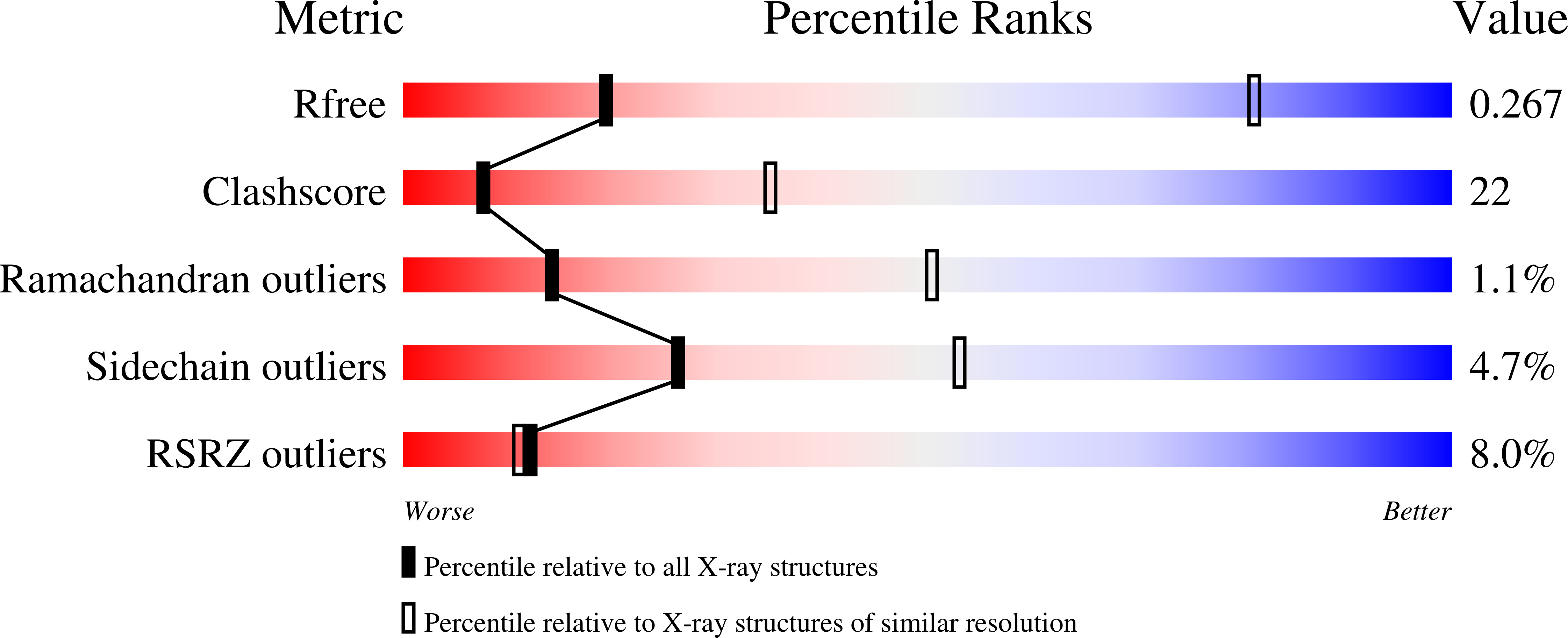Crystal structures of Mycobacterium tuberculosis GlgE and complexes with non-covalent inhibitors.
Lindenberger, J.J., Kumar Veleti, S., Wilson, B.N., Sucheck, S.J., Ronning, D.R.(2015) Sci Rep 5: 12830-12830
- PubMed: 26245983
- DOI: https://doi.org/10.1038/srep12830
- Primary Citation of Related Structures:
4U2Y, 4U31, 4U33, 4U3C - PubMed Abstract:
GlgE is a bacterial maltosyltransferase that catalyzes the elongation of a cytosolic, branched α-glucan. In Mycobacterium tuberculosis (M. tb), inactivation of GlgE (Mtb GlgE) results in the rapid death of the organism due to a toxic accumulation of the maltosyl donor, maltose-1-phosphate (M1P), suggesting that GlgE is an intriguing target for inhibitor design. In this study, the crystal structures of the Mtb GlgE in a binary complex with maltose and a ternary complex with maltose and a maltosyl-acceptor molecule, maltohexaose, were solved to 3.3 Å and 4.0 Å, respectively. The maltohexaose structure reveals a dominant site for α-glucan binding. To obtain more detailed interactions between first generation, non-covalent inhibitors and GlgE, a variant Streptomyces coelicolor GlgEI (Sco GlgEI-V279S) was made to better emulate the Mtb GlgE M1P binding site. The structure of Sco GlgEI-V279S complexed with α-maltose-C-phosphonate (MCP), a non-hydrolyzable substrate analogue, was solved to 1.9 Å resolution, and the structure of Sco GlgEI-V279S complexed with 2,5-dideoxy-3-O-α-D-glucopyranosyl-2,5-imino-D-mannitol (DDGIM), an oxocarbenium mimic, was solved to 2.5 Å resolution. These structures detail important interactions that contribute to the inhibitory activity of these compounds, and provide information on future designs that may be exploited to improve upon these first generation GlgE inhibitors.
Organizational Affiliation:
Department of Chemistry and Biochemistry, The University of Toledo, 2801 W. Bancroft St. Ms602, Toledo, OH, United States.

























